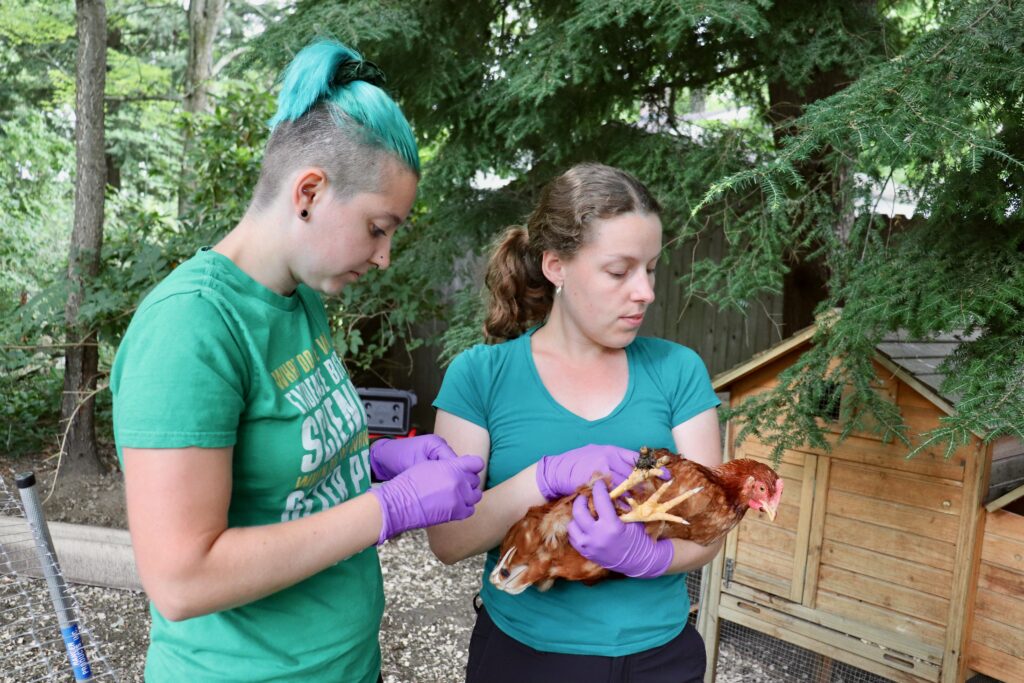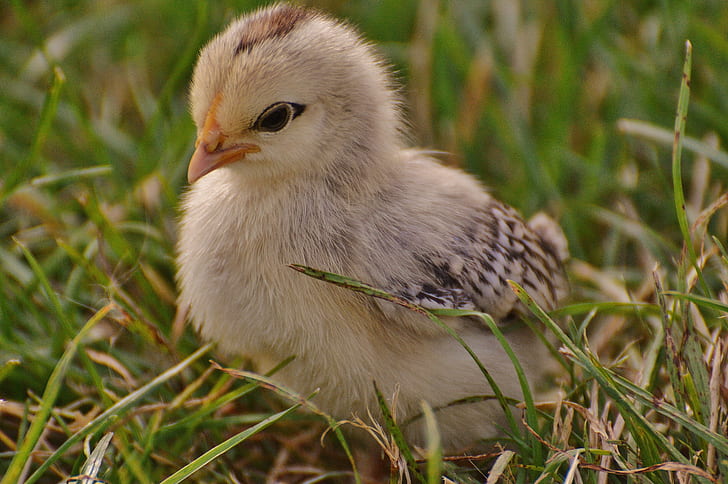
Salmonella in Adult Chickens:
As of 3/30/21, we have tested 30 flocks of chickens and found Salmonella enterica in 2 flocks (6.67%). The total number of birds tested was 393 birds (0.5% prevalence)
What does this mean?
- This is a higher flock positivity rate than other studies of backyard chickens have seen. A study in Boston found Salmonella in 1/53 (1.9%) of the flocks they sampled (McDonagh et al., 2018). A study of backyard chickens in western WA state found Salmonella in 1/34 (3%) of flocks tested.
- However, Salmonella is still rare in chickens in Vermont
- In the flocks we tested, only one of the birds in each flock had Salmonella at the time we tested. This means that you do not have to cull your whole flock if one has/gets Salmonella
- We have also found that the positive chickens have always cleared Salmonella by the time we get back to the farm to re-test (typically 2 weeks later)
Salmonella in baby chicks:

As of 04/09/21, we have tested 143 lots of baby poultry from agricultural supply stores, hatcheries, and individuals. We found Salmonella in one lot of turkey chicks last year and three shipments of chicks this year (2.8% of shipments
What does this mean?
- More than half our samples have come from NPIP-certified hatcheries, which are expected to be Salmonella-free
- Of the 52 samples not from NPIP-certified hatcheries, 4 were positive (7.7%).
- None of the samples from NPIP-certified hatcheries were positive
- Takeaway: Buying from an NPIP-certified hatchery or a store that buys from an NPIP-certified hatchery is the best way to reduce your risk of catching Salmonella from baby poultry

Campylobacter in backyard chickens

This year, we have begun to look for Campylobacter spp. in adult chickens. Unlike Salmonella, chicks don’t get Campylobacter through the egg. Instead, they typically get it from other birds with the infection. Adult birds are the most likely to carry Campylobacter spp. As of 4/9/21, we’ve tested 15 samples of bedding and found Campylobacter in 1 sample (6.7%).
What does this mean?
- This is extremely preliminary data, and the percent positive rate will change. Keep an eye on this page for updates. If you would like your birds tested, contact us to participate in our studies.
- Campylobacter is extremely contagious for chickens. Once one bird has it, all of the birds will get it.
- Campylobacter lives in the intestines of chickens. It doesn’t grow in the presence of oxygen, so chicken poop/infected meat is going to be the primary source of human infection by Campylobacter.
- However, Campylobacter grows to up to 10 billion cells/gram in chicken intestines (infectious dose: 500-10,000 bacteria), so a little bit of fecal matter can be enough to get you sick. Good hygiene is key here (handwashing after handling birds and eggs).
